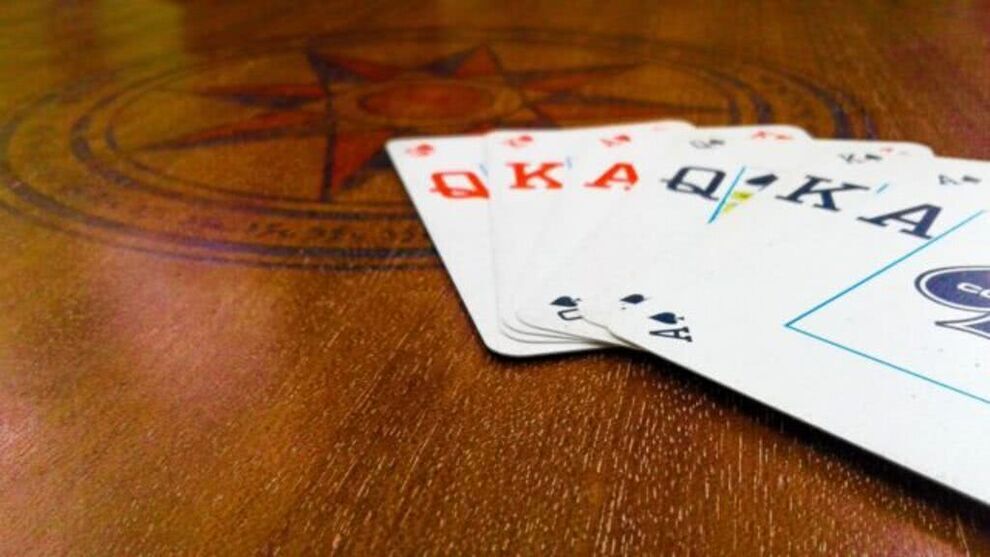Benny Binion, a famous poker player, is quoted as saying, “trust everyone but always cut the cards,” which brings to mind traditional poker games. These poker games appear to be exciting, but they are extremely difficult to play, which is absurd. The most basic form of poker, “Seven-card stud,” is also one of the most popular and easily accessible types of the game. Is it possible for newcomers to win this game? Let’s start by familiarizing ourselves with the game’s rules. Click here for a step-by-step guide on how to play poker.
Setup
The game can be played with two to eight people, and each player receives a unique set of chips to use during play. With these chips, you can place a large bet, a small bet, and an ante. The big bet will be twice the size of the small bet, and the ante will be 10% of the big bet. It should be noted that the length of the game is determined by the size of the bet, and that the betting limits are predetermined.
The Head-to-Head Competition
After all of the betting rounds, the players who are still in the hand discard two cards from their hand, reducing the number of cards to five, which constitutes the best possible hand. The player with the highest-ranking poker hand wins the game and takes home all of the chips in the pot; the order in which hands are ranked is consistent across all poker games.
A word of advice: the first round is crucial, and betting effectively will help relieve some of the pressure. As a result, the evidence presented in the preceding article shows that even inexperienced players can succeed in this game.
Taking Part in the Game Taking Part in the Game
As shown in the image to the right, each hand begins with a player receiving the first two cards of their hand face down, followed by a third card dealt face up. This street is also known as Third Street. The card facing up is known as the “door card,” and the two cards facing down are known as the “hole cards.” Based on these three cards, one would decide whether or not to continue playing their hand. The starting hand you choose to play in seven-card stud, as in any other variation of poker, is critical.
In the standard poker deal, each participant receives seven cards, three of which are dealt face down and four of which are dealt face up. Using these seven cards, the player must select the five-card combination that gives him the best possible outcome. The hand rankings are the same as in Texas hold’em and Omaha, with a royal flush being the best possible hand and a high card hand being the worst possible hand (no pair).
Other Articles That Might Interest You – Blackjack Online Gambling

- Online Gambling For Real Money
- Top Safety Precautions to Take When Playing Online Gambling Games
- LGBT-Friendly Casinos in Las Vegas
- Rankings, Order, Strength, Hierarchy, Best and Worst Hands in Poker
- Here Are Six Reasons Why You Should Play Video Slots Online
- A Comprehensive Look at Online Gaming Strategies
- Are You Ready to Dive Into the World of Virtual Reality Gaming?
- Locations in Serbia Where You Can Play Poker
The terms ante, bring-in, and betting are all used
The blinds are the forced bets that must be placed in Texas hold’em and Omaha poker. The antes are the forced bets that each player must place before receiving any cards in poker. Consider a game of seven-card stud with blinds of $10 and $20, an ante of $1, and a bring-in of $5 as an example.
Each player who wishes to be dealt into the game must first place a one-dollar ante bet in order to participate in the game and have a chance at winning the pot. Following that, the first three cards are dealt to each player, and it is decided who will be responsible for posting the bring-in. When playing seven-card stud, the player with the lowest door card must place the minimum bring-in bet of $5, but this player also has the option to “complete” the bet by placing an additional $10. (the small limit of the game). The betting then proceeds clockwise around the table, with each player having the option to call, raise, or fold at any time. If the first player who brought in only posts the bring-in, the other players may choose to raise the total bet to $10 as the first raise. This is due to the fact that the first player who brought in only posted the bring-in. After all bets have been placed, the “fourth street” round of play begins, in which each player who is still in the hand receives a fourth card.
Seven-card stud differs from other card games in that some of them use buttons to determine where the action begins. When playing seven-card stud, the player with the highest-ranking hand has the first opportunity to act, beginning with the fourth street and progressing forward.
However, before proceeding past the third street, it is critical to have a strong hand selection. The following are examples of good starting hands in the card game seven-card stud:
Beginning Hands
The most common format for playing seven-card stud poker is the limit format. Continuing with our previous example of a $10/$20 seven-card stud game, the betting limits on third and fourth street would be the lower limit, which in this case would be $10. On Fifth, Sixth, and Seventh Streets, the limit is raised to $20.
If a player pairs his door card on the fourth street, the player who opens the betting now has the option of betting twice the small limit or the game’s maximum amount. If a player starts the hand with an ace and then gets another ace on the fourth street, for example, that player has the option of betting $20 instead of the standard $10. This unique betting rule is only found in the high version of seven-card stud and does not appear in the split-pot version of the game.
What You Should Know About Ante, Bring In, and Betting
Following the reshuffle of the cards, each player must place an ante, also known as “dead money,” into the pot, and any subsequent bets will also be added to the pot. The dealer distributes three cards to each player, two of which are face down and one of which is face up. The player with the lowest value card is the one who must “bring in,” or choose, next. This player has the option of bringing in by paying the ante or paying the entire amount of the small bet. If the player holding the low card is paid in full, the remaining players must either call, fold, or raise; alternatively, they may simply fold their cards.
The first and second rounds are as follows
The bets and limitations are set at a low level in these two rounds, and there is a limit on how much can be wagered. The first round of play is known as “third street,” and it begins when the dealer deals each player an exposed card. Play then proceeds clockwise around the table, beginning with the player to the dealer’s left. Following that, the next round will begin with each player receiving one face-up card. The player who was dealt the highest card will begin play, and play will proceed clockwise around the table.
The third and fourth rounds are as follows
These are known as the fifth and sixth streets, respectively. They are played in the same way as the previous rounds, with the exception that the bets are based on larger limits. Find the best online casinos that offer online poker at concept-casinos.com.
The final round is
At this point in the game, known as the 7th street, each player is dealt a card, which is then turned over to them. The player who reveals the highest-valued card begins to lay, and betting proceeds clockwise around the table.
Conclusion
When playing seven-card stud, it is critical to keep a close eye on the cards your opponents are holding. For example, if you have a straight draw with K, Q, J, and 10, but three aces are already on the table, you can only draw to one ace and the remaining nines in the deck. This is due to the fact that you already have three aces in your hand. If you were unaware that another player had folded the case ace and did not know that this player had done so, your estimation of the odds of winning the hand could be off.
- Enhancing Trust with Blockchain Identity Verification - January 24, 2024
- How Marijuana Turns You into a Food Lover - December 1, 2023
- Behind the Scenes of the U.S. Nuclear Gun - November 28, 2023

